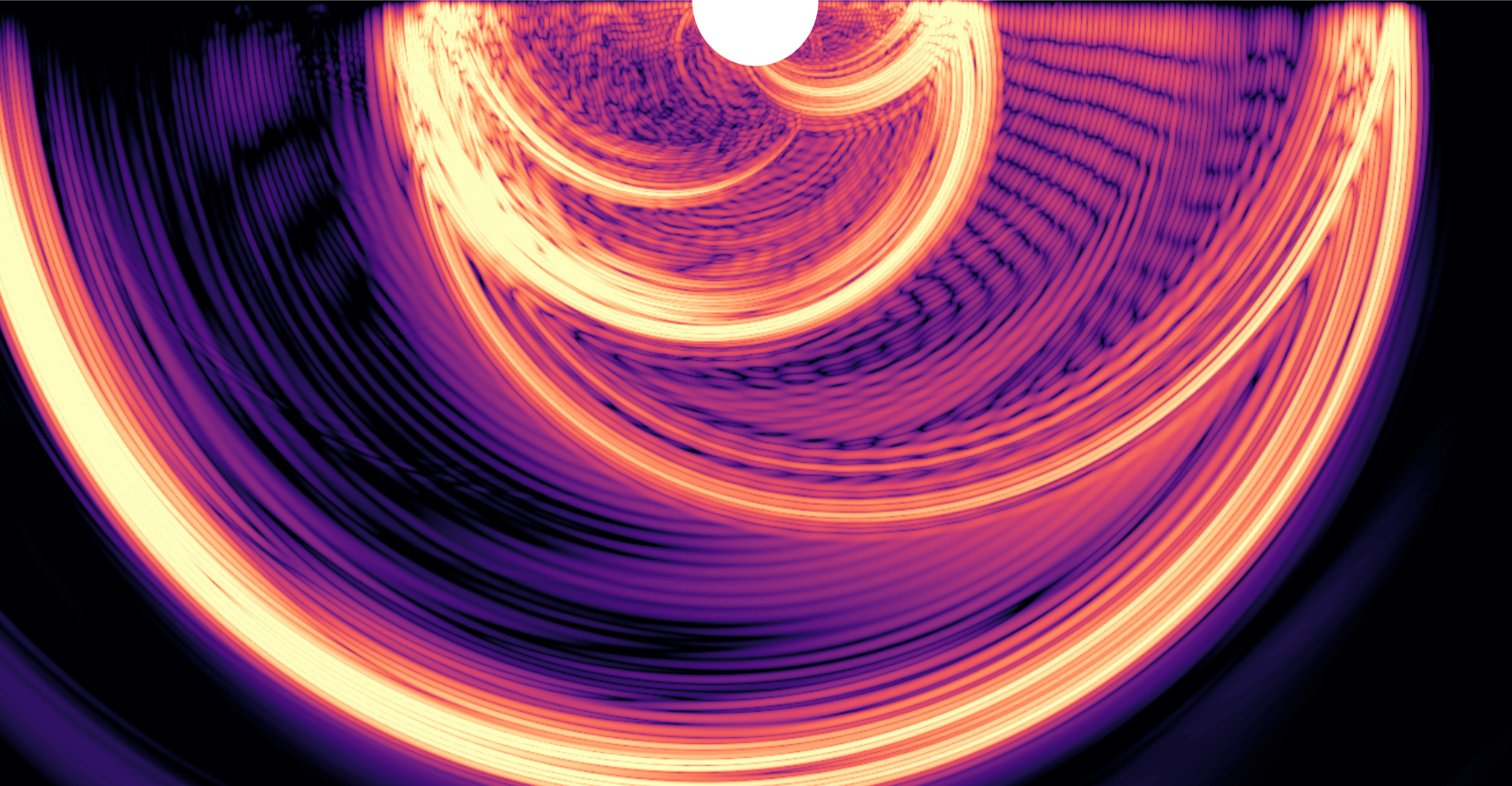
Black hole mimickers
Nonlinear dynamics of the ergoregion instability
In my recent work, I study the time-domain evolution of the ergoregion instability in horizonless, spinning ultra-compact objects within scalar field theories that mimic the nonlinear structure of Einstein’s equations. I find that this instability reaches saturation through a weakly turbulent cascade, where energy flows from large, unstable modes to smaller scales much faster than predicted by linear theory. This nonlinear process populates the counter-rotating stable light ring with a rich spectrum of higher-order azimuthal modes, forming a distinct ring-like structure. These results suggest that turbulence plays a key role in the fully gravitational saturation of the instability and may leave observable signatures in gravitational wave signals.
The evolution of the ergoregion instability from the linear regime (exponential growth of the l=1 mode early on) into the nonlinear regime (direct cascade to higher-order l-modes). While the nonlinear effects get amplified, energy gets transferred towards higher-order modes, or equivalently, smaller spatial scales through a turbulent process.
Probing Black Hole Mimickers Through Nonlinear Mergers
In this work, I present the first fully nonlinear and self-consistent study of the merger and ringdown of a black hole–mimicking object with stable light rings. By numerically solving the Einstein–Klein–Gordon equations for head-on collisions of binary boson stars in the large–mass–ratio regime, I produce spinning, horizonless remnants that exhibit stable light rings. The resulting gravitational waveforms reveal features anticipated from perturbative analyses: a prompt response that converges toward the Kerr black hole signal at high compactness, followed by periodic bursts resembling gravitational wave echoes. Interestingly, these bursts occur at high frequencies and arise from internal oscillations of the remnant. The waveforms also display a strong, long-lived component comparable in frequency to black hole quasi-normal modes. I further quantify the emitted energy, extract scaling relations for key timescales, and provide a detailed characterization of the resulting gravitational radiation.
The figure shows the gravitational waves emitted during the merger and ringdown of a black hole mimicker of compactness C, compared to the emissions from the Kerr black hole of the same mass and spin. One can see repeated bursts of emission due to perturbations sourced by the merger with the companion object, as well as low frequency and long-lived gravitational waves. The Fourier transforms are shown on the right.
